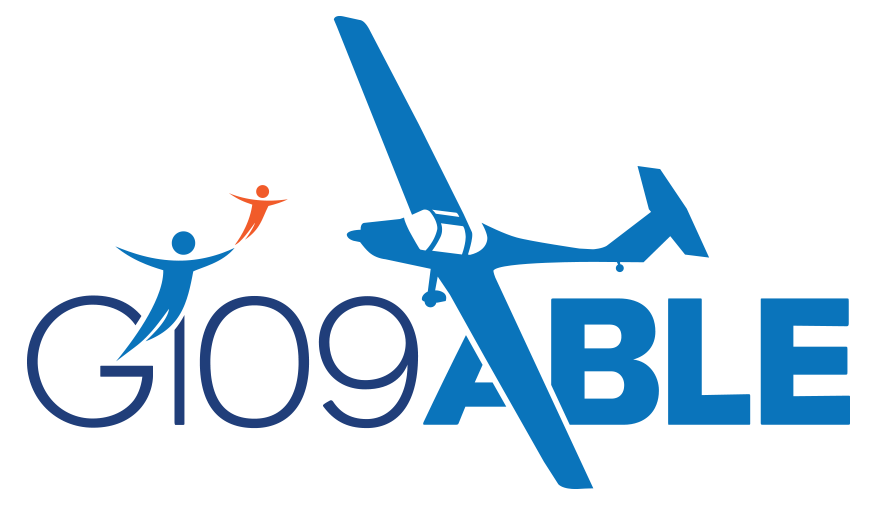Aerobility Launches Grob Program To Increase Disabled Flying
A partnership between a disabled flying charity, the UK government and various aerospace companies will see the effective creation of a new aircraft type this summer when the first Grob G109 Able light aircraft arrive in the UK.
The first two aircraft in Aerobility’s Project Able program are to be delivered to the British charity in the coming weeks. The charity has acquired the UK Royal Air Force’s fleet of more than 60 Grob 109B Vigilant motor gliders, formerly used to train air cadets, and intends to operate up to eight of them to provide flying opportunities to disabled people across the UK.
Purchase of these aircraft—and modifications to include controls suitable for disabled pilots—will be funded by selling the remainder of the fleet on the open market. The aircraft are being overhauled by the German manufacturer with new engines, propellers and avionics suites.
“About three years ago I read that the air-cadet fleet had been grounded and were potentially going to be scrapped,” says Mike Miller- Smith, Aerobility’s CEO. “I thought, ‘I wonder if a handful of those airplanes could be put on to the civilian register for the benefit of the disabled community?’”
The Vigilant appeared to tick a great many boxes from the charity’s perspective. It is cheap to operate and uses unleaded fuel so is environmentally responsible. It also has a number of practical advantages that make it well suited for disabled users.
“They’re very tough airplanes,” Miller-Smith says. “Disabled people aren’t always the gentlest, because they’ve got to grab onto something to pull in, or sit on the wing to climb in. With the gull-wing doors, it’s very easy to use a hoist to stick somebody in. And it’s got a good, roomy cockpit with a reclinable seat, so you can get that right for many people.”
After encouraging meetings with DESA—the defense ministry’s surplus sales body—Miller-Smith opened discussions with Grob, engine manufacturer Rotax, MT-Propeller, composite-specialist MRO Southern Sailplanes, avionics OEM Garmin, and others.
“We quickly worked out it’s actually cheaper to put the aircraft on the civilian register with a new engine, propeller and avionics than having to overhaul all the old stuff,” Miller-Smith says. “Effectively, it’s a new airplane certified by the manufacturer.”
Aerobility received a grant from the Department for Transport and acquired the airframes at the start of last year. To ensure the charity’s ongoing work wasn’t disrupted, a standalone charitable company was established to run the program, hiring former RAF Chinook crewman Liz McConaghy as project manager.
“We’ve got the prototype finished in Germany and we’re just waiting to get it back into the UK to do some promotional work and showcase it around the country,” McConaghy says. “The first aircraft will be ready not long after. Then we can show it to people. The more we can sell, the more funds we can get back into the charity.”
Aerobility currently operates from Blackbushe Airport in Hampshire and Tattenhill in Staffordshire. The aspiration is to base the new Ables at other airfields to increase the charity’s geographic reach.
“The biggest challenge we face is when people find out about us and really want to take part. They ask ‘How can I get involved?’ [And we say], ‘We’re in Blackbushe,’ and they say, ‘Ah—I’m in Perth’,” says Neil Tucker, a disabled flyer and trustee of the charity. “What we really want to do is spread that love more physically around the UK, to take away that physical barrier of people getting to the airframes.”
The Aerobility team spoke to The Weekly of Business Aviation during its second Armchair Airshow, a virtual/physical event hosted at London’s Biggin Hill Airport and broadcast online, to raise funds and awareness. The impact the charity’s work has on those it exists to help is considerable, and irreplaceable.
Harvey Matthewson, 20, was diagnosed with cerebral palsy at age two and is the aviation activity officer for Aerobility. He says he came to the charity in 2016 “with nothing but a phobia of flying and a dream to be a pilot, which wasn’t something that really went together.” He conquered his fears and now holds a private pilot’s license. But, he argues, the charity’s most profound effects are not felt in the air.
“For a disabled person, who might be reliant on others for care or may be confined throughout their lives, to move an aircraft in three dimensions is very liberating,” Matthewson says. “That sensation and that magic leaks into other parts of their lives. In young people, we see them quite often doing slightly better at school; we could see others have the confidence to go out and get their first job.”
The Grob Ables will be built to order. The former MoD fleet includes aircraft of varying ages, though Miller-Smith says that even the most heavily used still have flown under half the limit of hours on glass fiber aircraft. Pricing will reflect the remaining hours and could be reduced from a baseline of about £150,000 ($210,000) if sufficient orders are made to enable bulk buying of components.
McConaghy says the company has already confirmed its first sale, to a private individual, and points out the platform’s utility is not just for cadet-type flight-training operations but also for surveillance and other missions.
“There’s a plethora of things it could be used for,” she says. “It’s got a really good time-on-task, and the fuel burn is low. It’s green as well— you can turn off the engine and glide in it. It’s really moving in that space aviation is going toward.”
The Armchair Airshow is available online.
For media enquiries regarding Project Able please contact Emerald Media via email at: communications@emeraldmedia.co.uk

